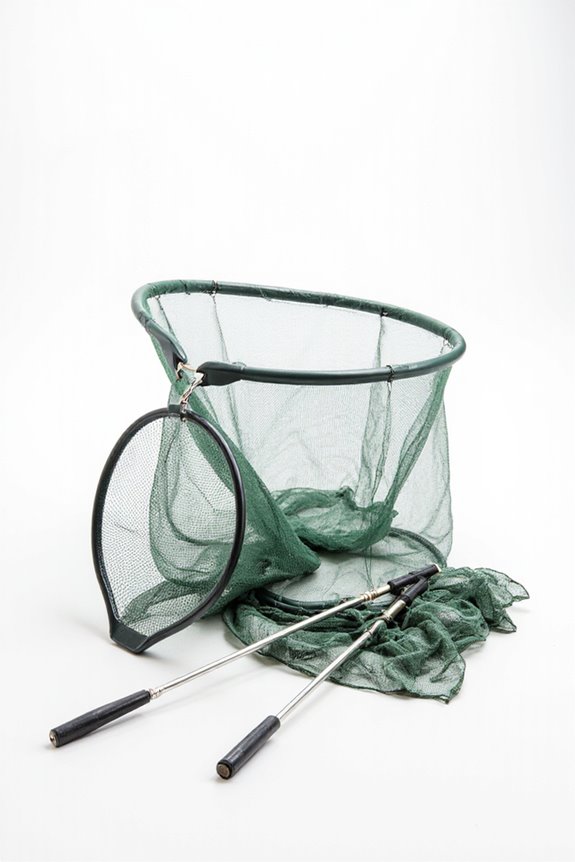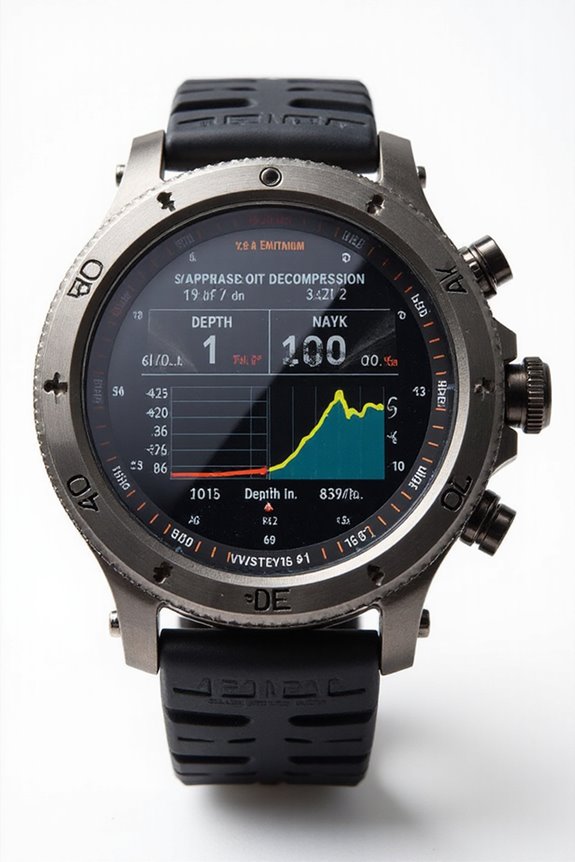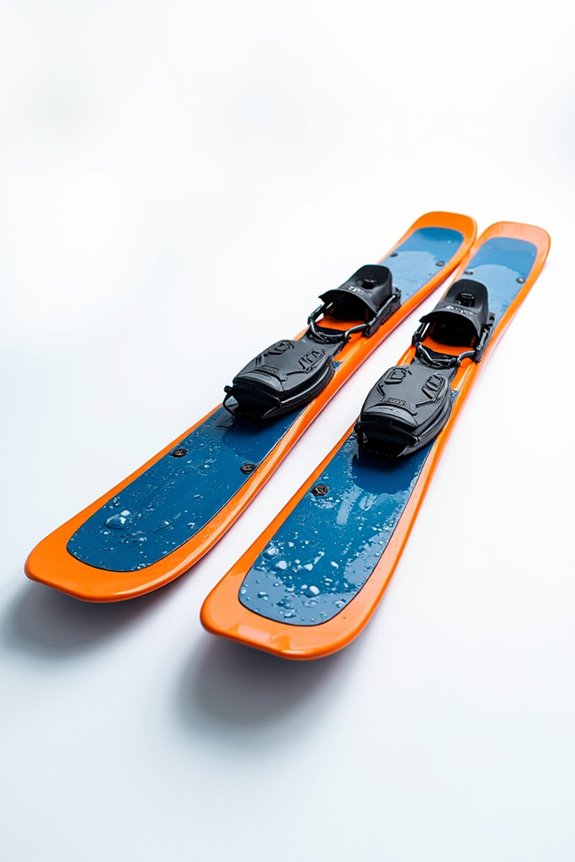When picking a boat landing net, size really matters—we want one that suits the fish we’re after, from compact hoops for panfish to larger, deeper nets for trophy catches like musky. It’s about balancing net depth to keep fish safe and having a handle length that reaches without risk. Plus, material choice affects both durability and fish friendliness—rubber nets treat fish gently, nylon is tough but can be rough. Curious how to fine-tune these details for smooth landings?
Key Takeaways
- Boat landing net size should match the targeted fish species’ average size for safe, stress-free handling.
- Hoop dimensions vary: 10–15 inches for small fish, 20–25 inches for medium fish, and over 30 inches for large trophy fish.
- Net depth is crucial to prevent fish injury and escape, especially for long-bodied species like musky and salmon.
- Lightweight but sturdy nets improve maneuverability, balancing net weight with fish behavior enhances smoother landings.
- Extendable handles increase reach and control, benefiting boat fishing by minimizing the risk of losing slippery fish.
Factors to Consider When Selecting Boat Landing Net Sizes
When it comes to picking the right size for your boat landing net, we’ve got to evaluate a few key factors that can make or break your fishing trip. First off, net weight really matters—too heavy, and maneuvering becomes a workout; too light, and it might not handle bigger catches. We also need to take into account species behavior: is our target a feisty fighter or a sluggish swimmer? That influences how sturdy and roomy our net should be. The net’s size should match the species’ usual size, providing enough depth to keep fish safe without causing stress or injury. Think of it as giving your catch a cozy, secure ride—not a tight squeeze. So, balancing net weight and species behavior leads us to the perfect net, making every landing smooth and satisfying.
Comparing Net Hoop Dimensions for Different Fish
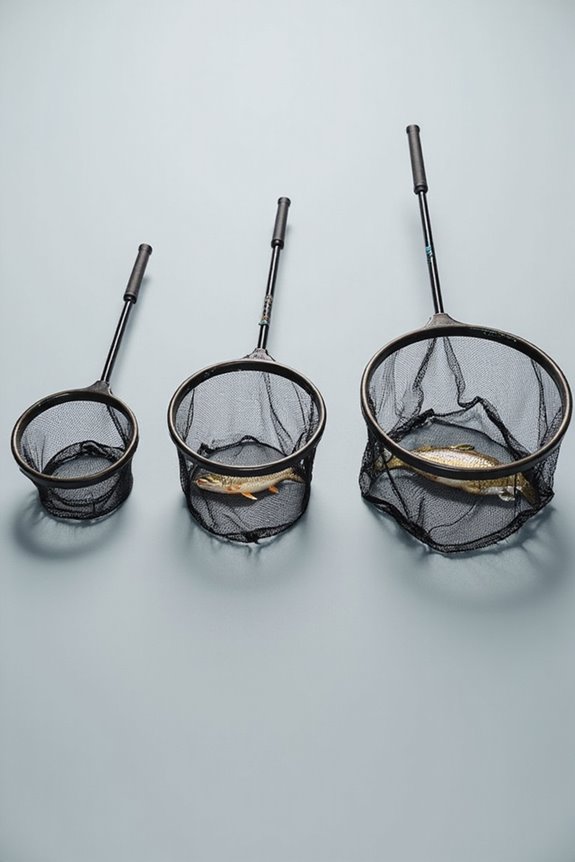
Although choosing the right net hoop size might seem like a small detail, it can make a big difference in your fishing success. For smaller fish like trout and panfish, a compact hoop—about 10 to 15 inches wide—helps with quick landings, especially in tight spots. Bass and walleye anglers often favor medium hoops around 20 to 25 inches, paired with teardrop net shapes that complement these species’ behavior, making scooping easier. When going after trophy fish, we’re talking large hoops over 30 inches to handle their size and strength, but watch out—a bigger net means more water resistance and a workout for your arms! Matching net shape and size to fish behavior isn’t just smart—it’s the secret sauce to landing more fish and enjoying every trip.
The Role of Net Depth in Effective Fish Handling
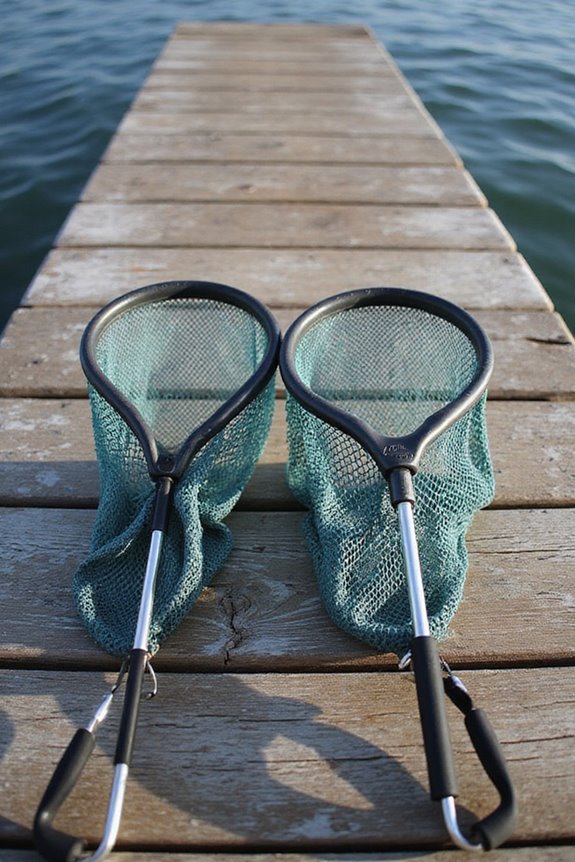
Since the depth of your landing net plays a surprisingly big role in how well you handle fish, it’s worth paying close attention to this often-overlooked detail. Different fish species, like musky and pike, need deeper nets to comfortably hold their longer bodies without the drama of a last-minute escape. Salmon, too, benefit from a bit of extra net depth to avoid injuries during landing. Ever wonder why some nets feel like tiny fish prisons? It’s all about matching net depth to fish size and species. A net that’s too shallow risks stress and injury, which no angler wants. So, picking a net with the right depth isn’t just about size—it’s about respecting the fish and increasing our chances of a smooth, successful catch every time.
Advantages of Extendable Handles for Boat Fishing
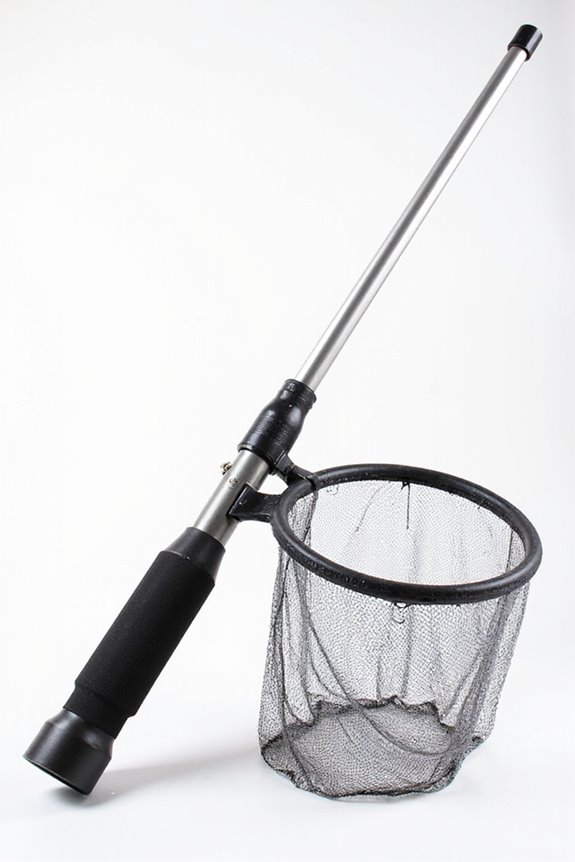
Fishing from a boat brings its own set of challenges, and having the right net handle can make all the difference. One of the biggest extendable benefits is handle versatility—being able to adjust length means we’re prepared for tight spots or open water adventures without missing a beat. Who hasn’t struggled trying to reach that slippery big fish without leaning way out? Extendable handles, especially octagon-shaped aluminum ones, offer quick adjustments and better leverage, keeping us efficient and comfortable. Plus, collapsible designs save precious boat space, which is understood to be limited. Whether you’re tackling large fish or maneuvering in close quarters, an extendable handle gives you that extra reach and control. It’s a smart move for any angler looking to up their game while keeping things practical.
Choosing the Best Net Materials for Durability and Fish Safety

When it comes to picking the right net, the material matters just as much as the size or handle. We all want durability, but fish safety considerations play a big role, too. Rubber nets, for example, are gentle on fish scales and fins—perfect for catch-and-release fans like us—while resisting rot and tangles. Nylon nets offer strength but can be rough on fish, though coated nylon helps ease that. Then there’s PVC and polyester nets, combining durability with softness, plus UV resistance for long days on the water. Choosing among these net material types boils down to balancing toughness and kindness to our finned friends. After all, isn’t part of the joy preserving the catch, whether it’s a story to tell or a fresh release?
Balancing Cost and Portability in Boat Landing Nets
After deciding on the right net material that protects our scaly friends and stands up to wear and tear, it’s time to think about how much we’re willing to spend and how easy it is to carry that net around. We want cost efficiency without sacrificing net versatility, right? Smaller nets like the YAKER LANDING NET keep things compact and wallet-friendly, perfect for kayak fishing trips. But if you’re after bigger catches, investing in a larger or medium-sized net like the KELLEY’S ISLAND or GREEN BAY net means more space—though it might challenge your boat’s storage. Collapsible or telescoping designs offer a neat compromise, enhancing portability while still handling decent-sized fish. So, think about your fishing style and storage space; balancing these helps us pick nets that feel just right, not too bulky or too pricey.
Frequently Asked Questions
How Do Water Conditions Affect the Choice of Landing Net Size?
It is understood that net buoyancy and water clarity play key roles in choosing a landing net size. Together, they affect how easily we manage our catch and spot fish, ensuring we’re equipped for different water conditions every time.
Can Landing Nets Be Customized for Specific Boat Types?
Did you know 85% of anglers prefer custom net features? We can tailor landing nets to match specific boat designs, ensuring you feel connected and ready on the water with gear made just for your style and vessel.
What Maintenance Is Required to Prolong Net Material Life?
It is understood that net cleaning and repair techniques are key to prolonging your net’s life. Together, we’ll rinse regularly, inspect for damage, use gentle soaps, and perform timely repairs, keeping our fishing community’s gear strong and reliable.
Are There Recommended Net Sizes for Night Fishing?
For night fishing, we recommend medium-sized nets that balance size and manageability. Prioritizing net visibility with reflective markers helps us stay effective and connected while minimizing fish disturbance in low light. We’re in this together.
How Does Fish Behavior Influence Net Handling Technique?
When handling different fish species, we adjust our net retrieval based on their behavior—calm movements for tired fish, quicker for thrashers. Together, we learn to respect each species’ traits, making netting safer and more successful for all.

